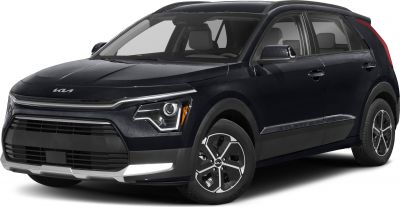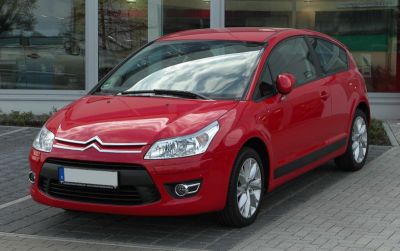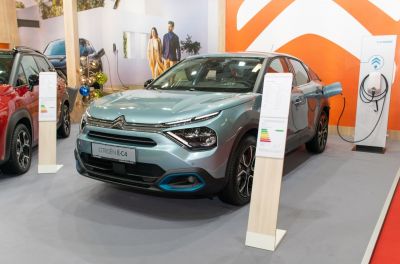 2025 Citroen C4 III (Phase II, 2024) Dimensions, Size & Specs
2025 Citroen C4 III (Phase II, 2024) Dimensions, Size & SpecsMeasurements of the 2025 Citroen C4 III, engineered for optimal performance and comfort
| Dimensions | |
|---|---|
| Length: | 4350 mm171.3 in14.3 ft |
| Width: | 1800 mm70.9 in5.9 ft |
| Width (Folded Mirrors): | 1834 mm72.2 in6.0 ft |
| Width (Opened Mirrors): | 2032 mm80.0 in6.7 ft |
| Height: | 1525 mm60.0 in5.0 ft |
| Ground Clearance: | 156 mm6.1 in0.5 ft |
| Trunk Capacity: | 380 liter13.4 cu ft |
| Trunk Capacity (Max): | 1250 liter44.1 cu ft |
| Weight Specifications | |
| Curb Weight: | 1266-1561 kg2791-3441 lbs |
| Maximal permitted Weight: | 1735-2020 kg3825-4453 lbs |
| Roof Load: | 80 kg176 lbs |
| Tire Specifications | |
| Rims Sizes: |
|
| Tire Sizes: |
|
The Citroen C4 III (Phase II), introduced in 2024 for the 2025 model year, represents a modern evolution of Citroen’s compact car lineup, offered as both a coupe and an SUV variant. This generation combines sleek styling with practical dimensions and versatility, making it a competitive choice in the compact vehicle segment. The car measures a length of 4350 mm (171.3 inches) and a width ranging from 1800 mm (70.9 inches) up to 2032 mm (79.9 inches) when including opened mirrors, reflecting a balanced width ideal for urban maneuverability and stable road presence. Height varies slightly from 1520 mm to 1525 mm (59.8 to 60 inches), offering a comfortable ride height with 156 mm (6.1 inches) of ground clearance, suitable for both city driving and light SUV requirements.
Weight varies depending on configuration, with curb weight between 1266 kg and 1561 kg (2790 to 3441 lbs), and a maximum weight capacity ranging between 1735 kg and 2020 kg (3825 to 4452 lbs), accommodating passengers and cargo effectively. The car provides generous luggage space of 380 liters (13.4 cubic feet) in standard configuration, which expands impressively to 1250 liters (44.1 cubic feet) with rear seats folded, highlighting its practical design for families or travelers requiring flexible cargo capacity. Roof load capacity stands at 80 kg (176 lbs), supporting additional roof-mounted carriers or equipment.
The Citroen C4 III (Phase II) rides on rims sized 16 to 18 inches, paired with tire sizes including 215/65 R16 and 195/60 R18, delivering a balanced mix of comfort and handling dynamics suitable for urban and suburban roads. This generation blends contemporary aesthetics and versatile body styles with practical dimensions and ergonomic functionality, making the 2025 Citroen C4 III an ideal choice for those seeking a compact coupe or SUV with spacious cargo solutions and up-to-date features.
Discover the standout features that make the 2025 Citroen C4 III a leader in its class
Have a question? Please check our knowledgebase first.
The 2025 Citroën C4 III (Phase II) measures 4350 mm (171.3 inches) in length, making it a moderately sized compact coupe SUV. Its width is 1800 mm (70.9 inches) without mirrors, while with folded mirrors it extends slightly to 1834 mm (72.2 inches) and with mirrors fully opened, it reaches 2032 mm (80 inches). The vehicle's height ranges from 1520 mm to 1525 mm (59.8 to 60 inches), providing a balanced stance typical of modern coupe SUVs. These dimensions contribute to a stylish yet practical footprint suitable for urban and suburban driving.
The curb weight of the Citroën C4 III (Phase II) ranges from 1266 kg to 1561 kg (2790 to 3441 lbs), indicating variations due to trim levels, equipment, and powertrain options. A lighter curb weight at around 1266 kg enhances fuel efficiency and agility, while the heavier variants, approaching 1561 kg, might include more advanced features or stronger structural components. This weight range keeps the car competitive among compact SUVs, balancing dynamic performance with practicality.
The maximum weight of the Citroën C4 III (Phase II) spans from 1735 kg to 2020 kg (3826 to 4453 lbs). This figure defines the gross vehicle weight rating (GVWR), which includes passengers, cargo, and the vehicle itself. Maintaining proper loading within this limit is vital for safety, handling, and braking performance. The upper limit around 2020 kg allows for decent payload capacity, making the C4 versatile for family trips or transporting equipment, especially when rear seats are folded to expand cargo space.
With rear seats in their standard upright position, the Citroën C4 III (Phase II) offers 380 liters (13.4 cubic feet) of luggage capacity. When the rear seats are folded down, the space increases significantly to 1250 liters (44.1 cubic feet). This flexibility makes the C4 well-suited for everyday commuting with moderate cargo needs, as well as for larger loads such as sports equipment, luggage for trips, or weekly shopping, enhancing its practicality as a coupe SUV.
The ride height or ground clearance of the Citroën C4 III (Phase II) is 156 mm (6.1 inches). This clearance is typical for a compact SUV offering a comfortable balance between sporty handling and the ability to manage uneven roads or mild off-road conditions. A ground clearance of 156 mm allows the vehicle to tackle speed bumps, minor potholes, and sloping driveways without difficulty while maintaining stable on-road dynamics and a low center of gravity.
Yes, the Citroën C4 III (Phase II) generally fits comfortably within a standard single-car garage. Given its length of 4350 mm (171.3 inches) and a width of 1800 mm (70.9 inches) without mirrors, or a folded mirror width of 1834 mm (72.2 inches), it falls within typical garage dimensions which usually start at around 2400 mm (94.5 inches) width and 4800 mm (189 inches) depth. However, with mirrors unfolded at 2032 mm (80 inches), careful maneuvering might be required to avoid contact with garage walls or other cars parked alongside.
Compared to its predecessor generation, the Citroën C4 III (Phase II) maintains a similar size but incorporates subtle dimensional refinements for enhanced aesthetics and practicality. While specific predecessor measurements vary by earlier production phases, the Phase II maintains a compact 4350 mm length, striking a balance between urban maneuverability and interior space. Innovations may include slightly adjusted width and improved interior packaging to maximize luggage capacity despite similar external footprints. These evolutionary changes improve the driving experience and usability over the last generation.
The Citroën C4 III (Phase II) competes well within the compact coupe SUV segment with its 4350 mm length and 1800 mm width, placing it mid-range in terms of size. Its luggage capacity of 380 liters, expanding to 1250 liters with folded seats, is competitive, offering more practicality than some sportier rivals who often sacrifice cargo volume for coupe styling. The 156 mm ground clearance provides a good blend of sportiness and utility, comparable to vehicles like the Peugeot 3008 or Renault Arkana. Overall, the C4 offers balanced dimensions aimed at drivers seeking style without compromising everyday usability.
The Citroën C4 III (Phase II) offers rim sizes of 16 and 18 inches, paired with tire size options including 215/65 R16, 195/60 R18, along with ratings such as 98H and 96H that denote speed and load capacity. Larger 18-inch wheels typically provide sharper handling and a sportier ride but may sacrifice some ride comfort compared to 16-inch wheels, which offer smoother cushioning over road imperfections. The specified tires balance grip and comfort, suiting the C4’s role as a stylish yet practical coupe SUV for varied driving environments.
The roof load capacity for the Citroën C4 III (Phase II) is up to 80 kg (176 lbs). This allows owners to safely fit roof racks or carriers for items such as bikes, skis, or luggage boxes, expanding the vehicle’s versatility for outdoor activities or extended travel. Staying within the 80 kg limit is crucial to maintaining vehicle stability and safety, as exceeding this weight could impact handling dynamics, increase roof stress, and potentially void warranty conditions related to structural damage.
Discover similar sized cars.

| Production: | 2024-present |
|---|---|
| Model Year: | 2023 |
| Length: | 4420 mm174.0 in |
| Width: | 1825 mm71.9 in |
| Height: | 1545-1570 mm60.8-61.8 in |

| Production: | 2018-2023 |
|---|---|
| Model Year: | 2018 |
| Length: | 4360 mm171.7 in |
| Width: | 2098 mm82.6 in |
| Height: | 1512-1526 mm59.5-60.1 in |

| Production: | 2023-present |
|---|---|
| Model Year: | 2024 |
| Length: | 4400 mm173.2 in |
| Width: | 1844 mm72.6 in |
| Height: | 1556 mm61.3 in |

| Production: | 2023-present |
|---|---|
| Model Year: | 2024 |
| Length: | 4400 mm173.2 in |
| Width: | 1844 mm72.6 in |
| Height: | 1556 mm61.3 in |

| Production: | 2008-2010 |
|---|---|
| Model Year: | 2009 |
| Length: | 4288 mm168.8 in |
| Width: | 1964 mm77.3 in |
| Height: | 1456 mm57.3 in |

| Production: | 2020-2024 |
|---|---|
| Model Year: | 2020 |
| Length: | 4360 mm171.7 in |
| Width: | 2032 mm80.0 in |
| Height: | 1525 mm60.0 in |

| Production: | 2020-2024 |
|---|---|
| Model Year: | 2020 |
| Length: | 4360 mm171.7 in |
| Width: | 2032 mm80.0 in |
| Height: | 1525 mm60.0 in |
